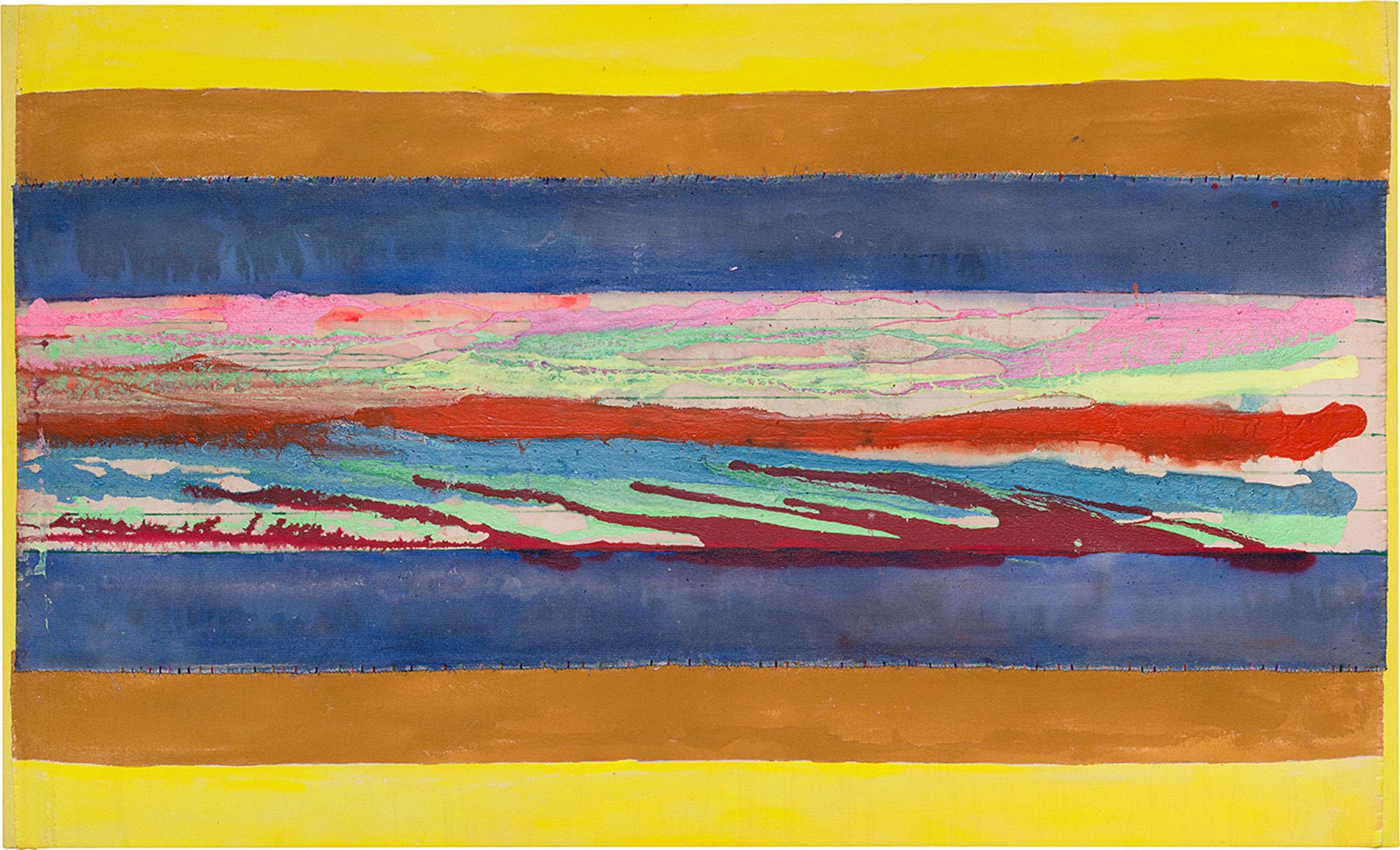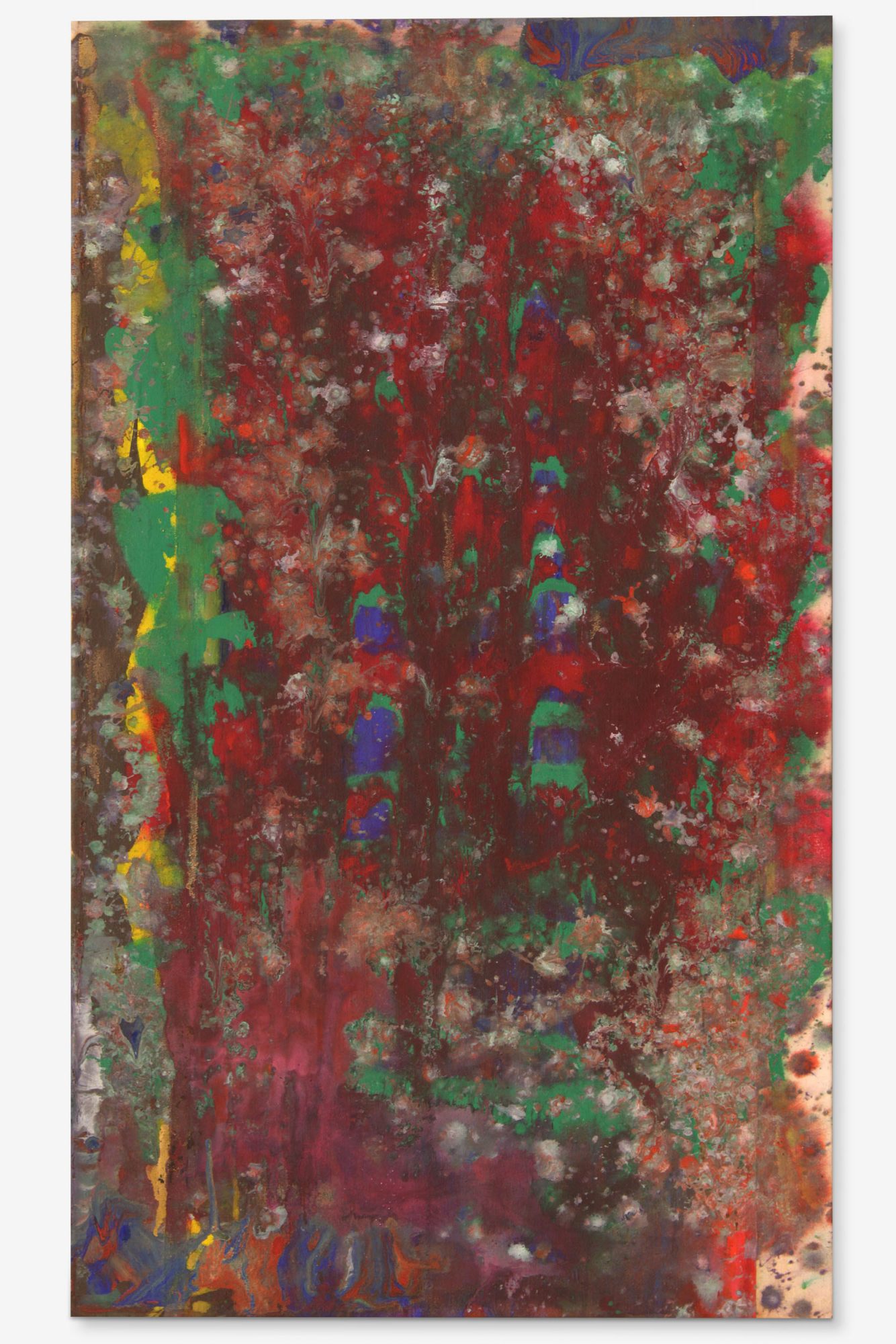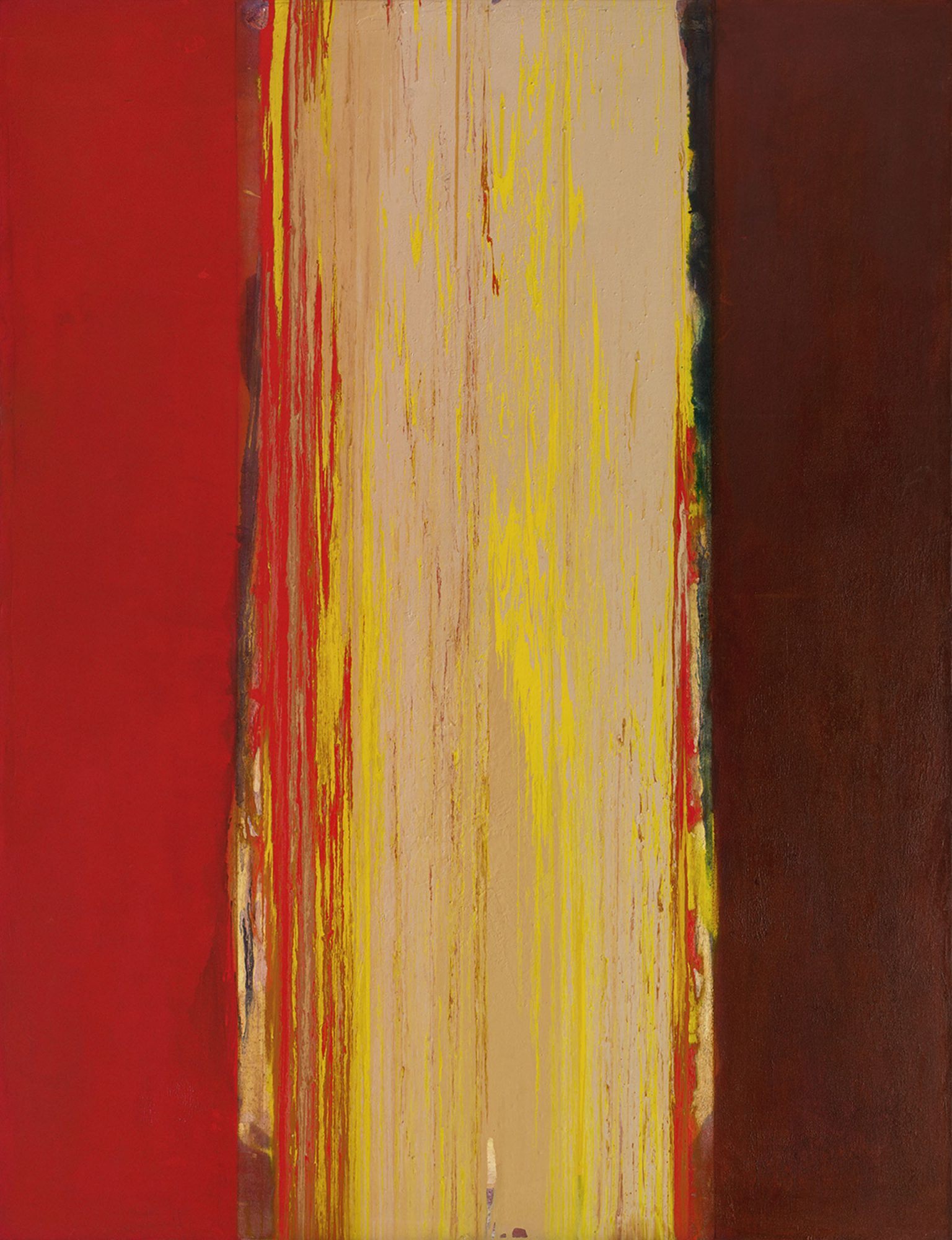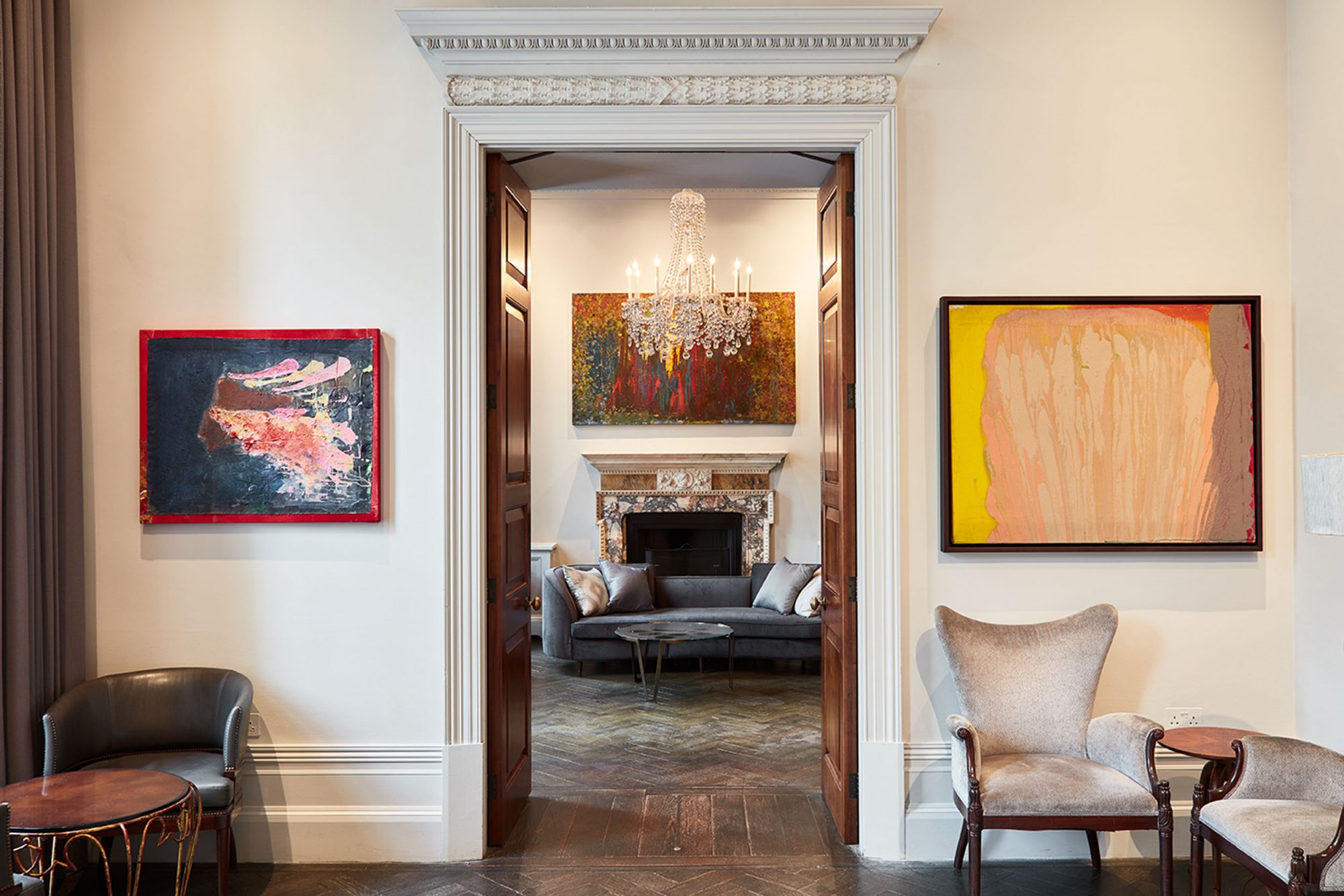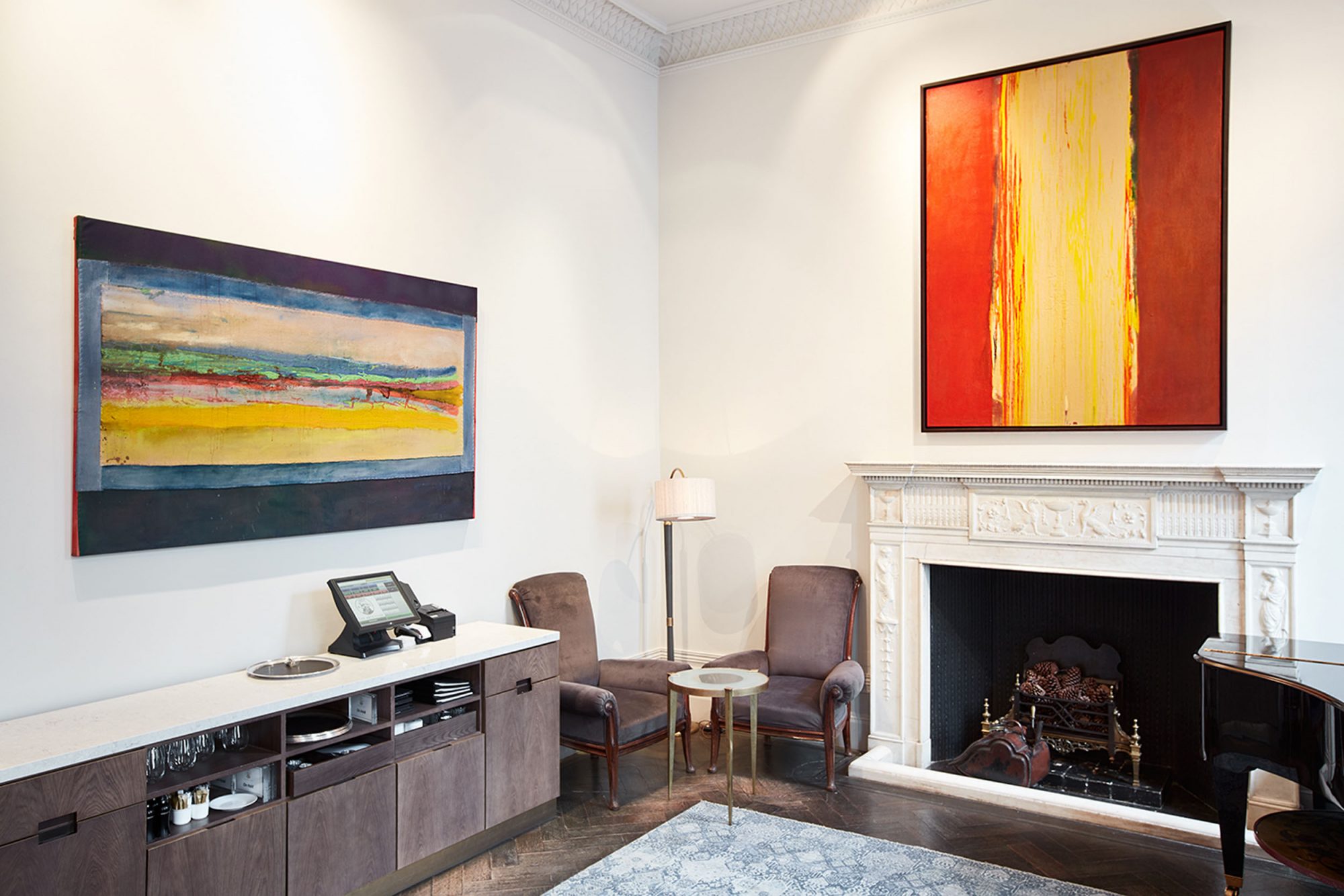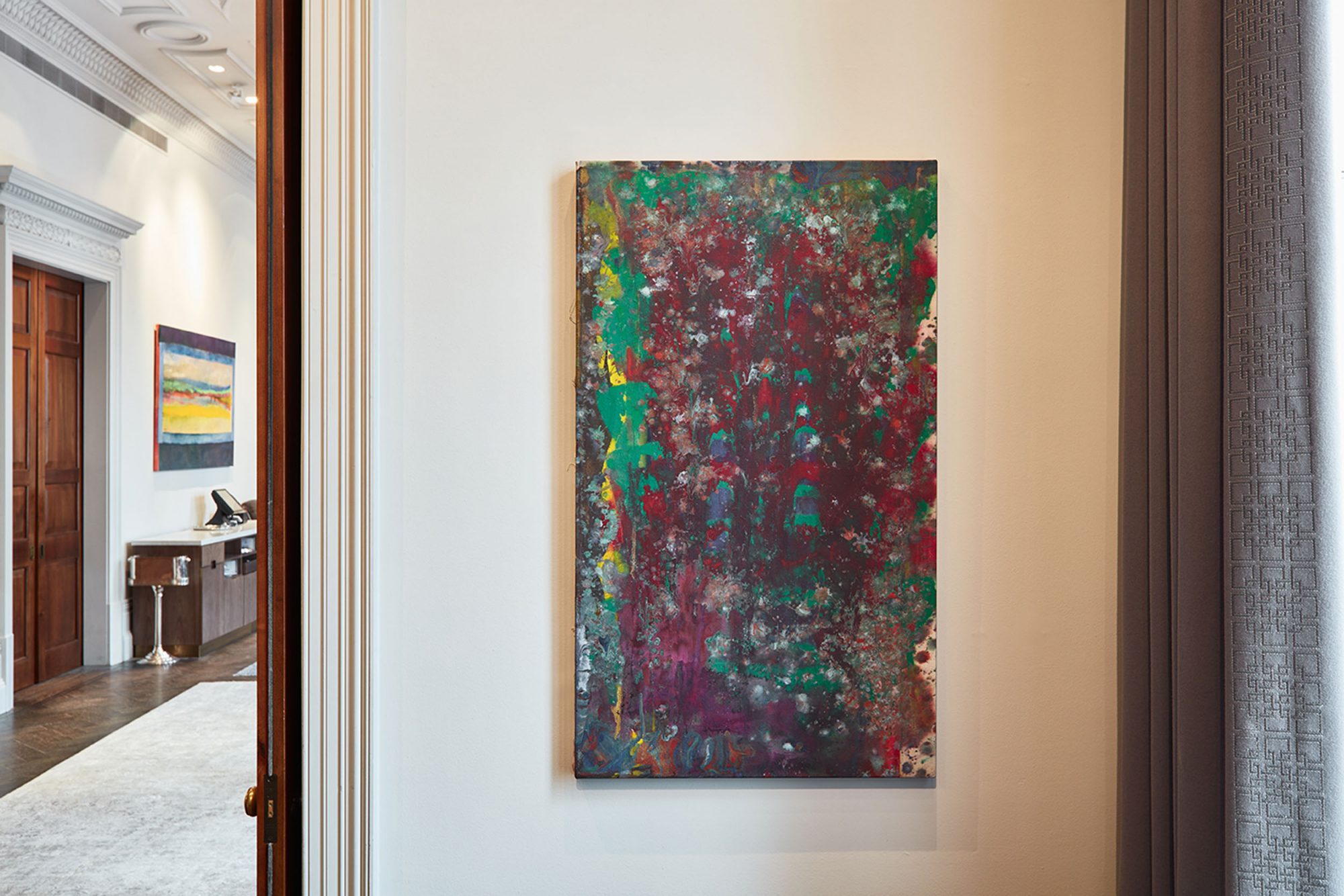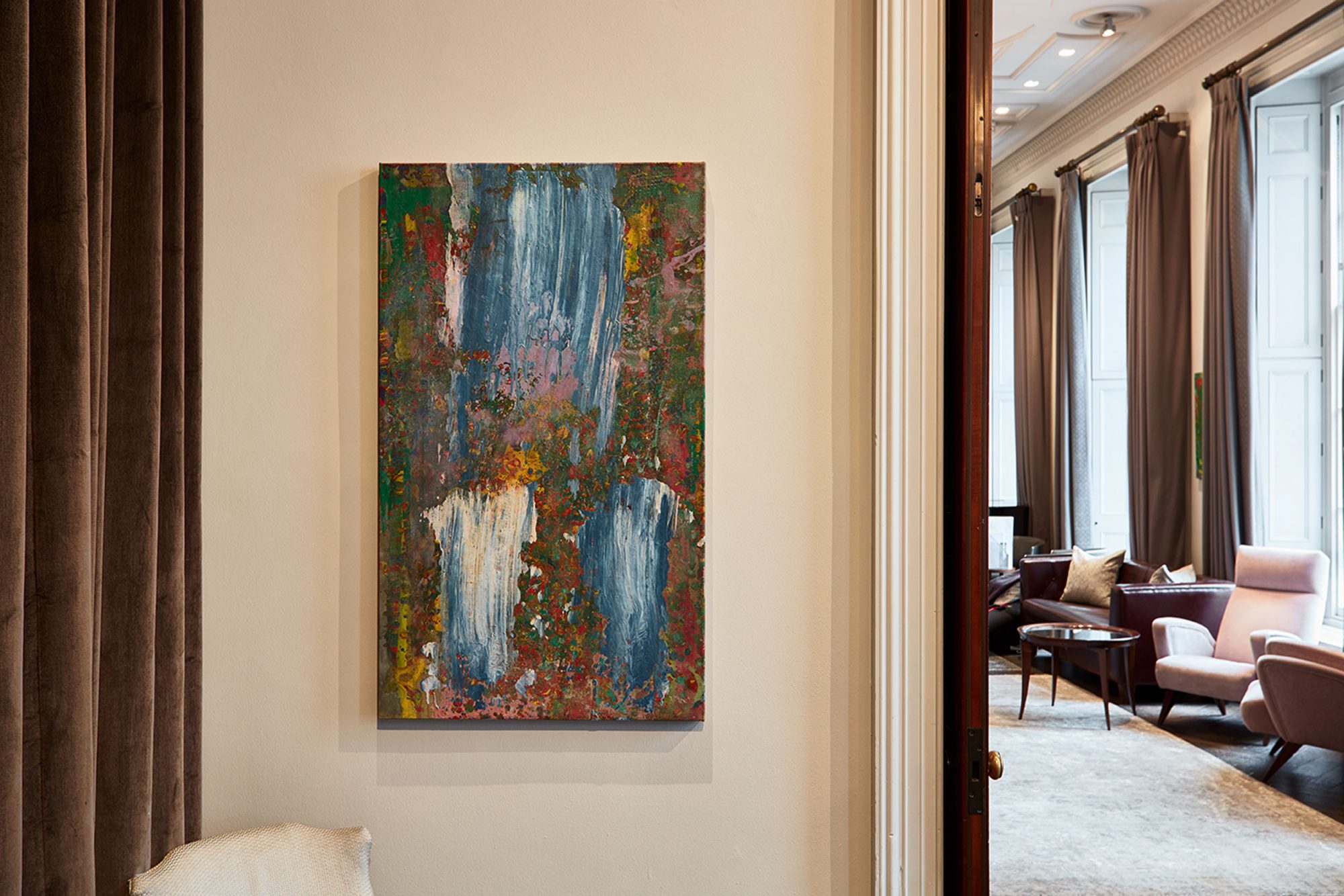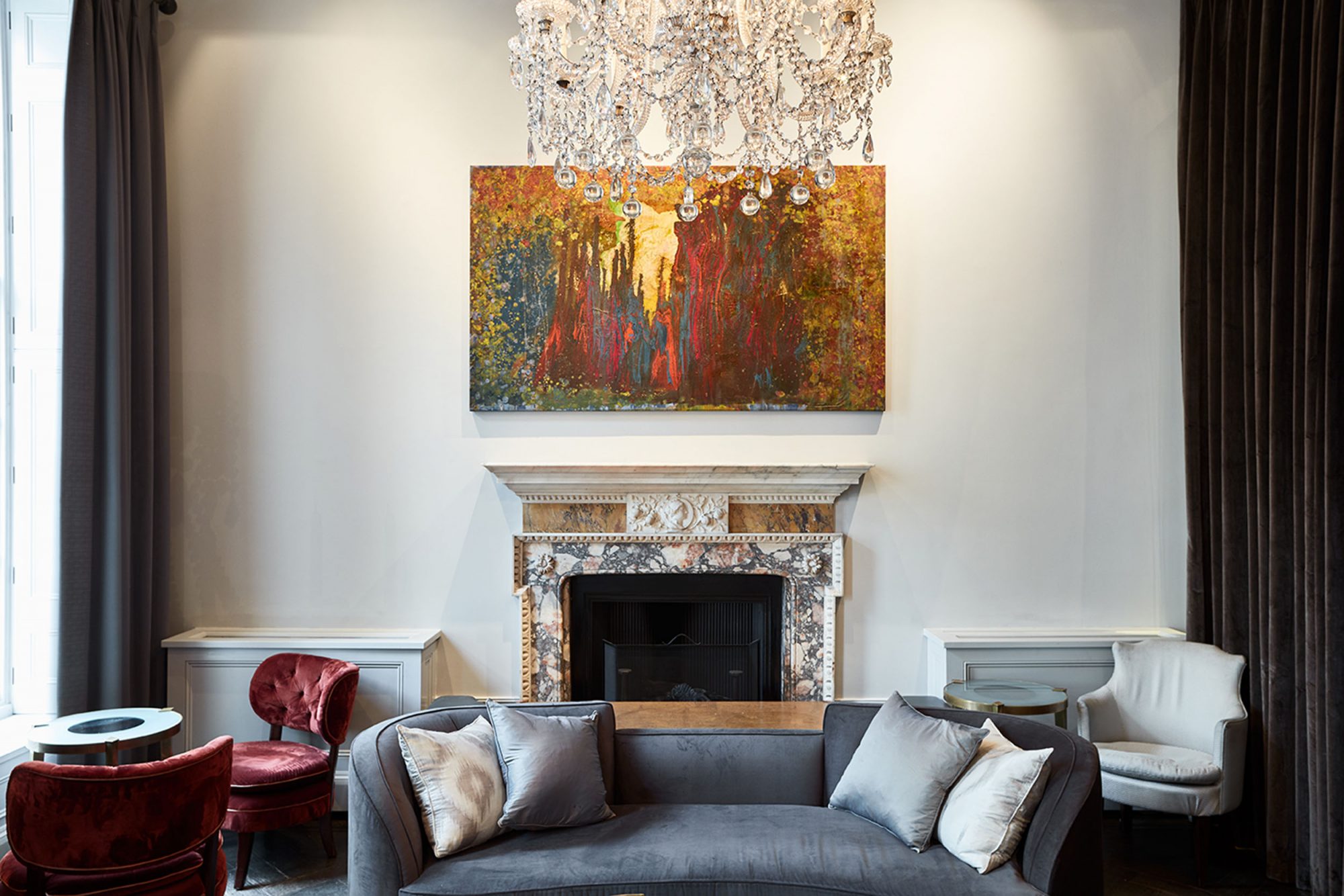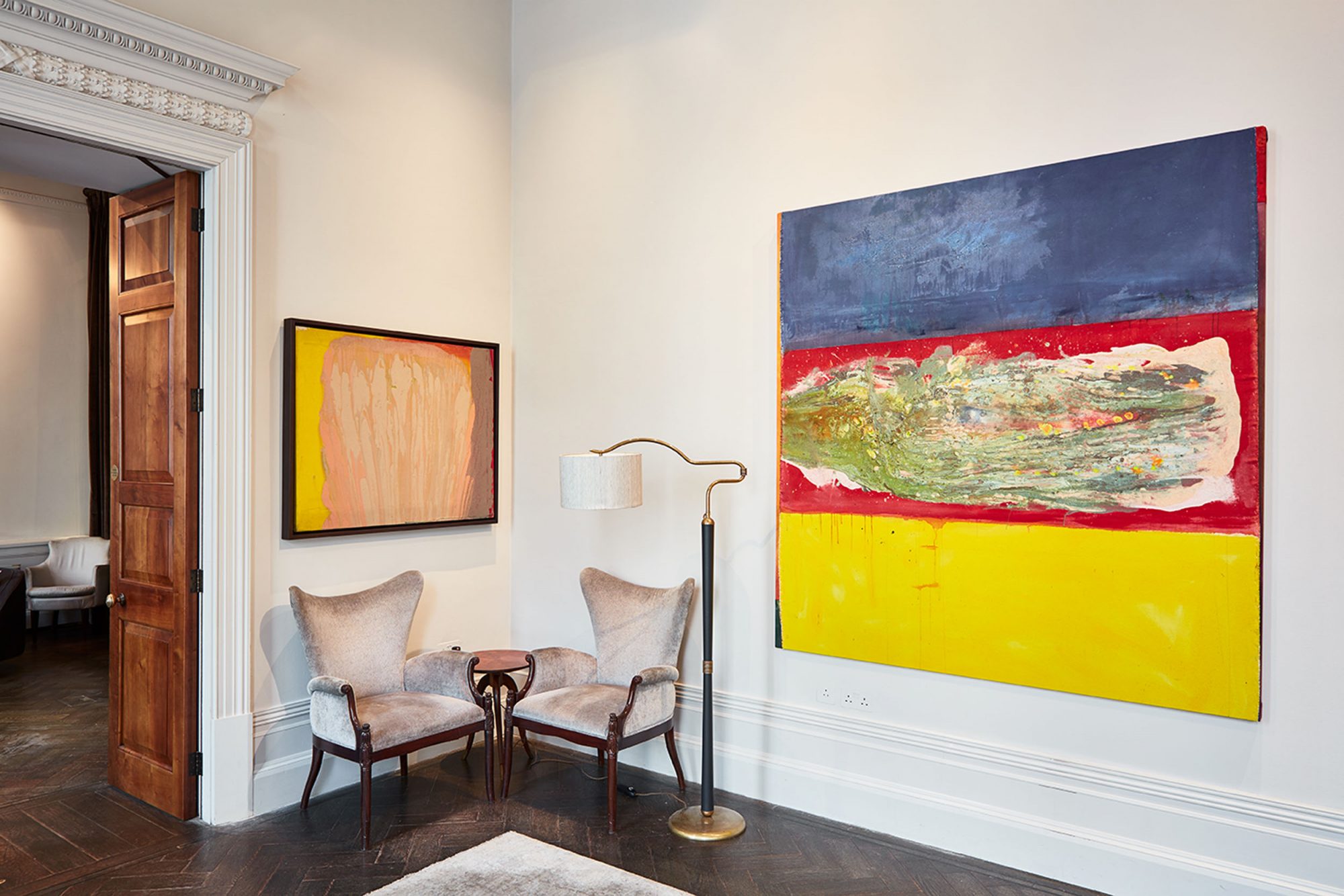Frank Bowling
— The Arts Club, London
Installation View: Frank Bowling, The Arts Club
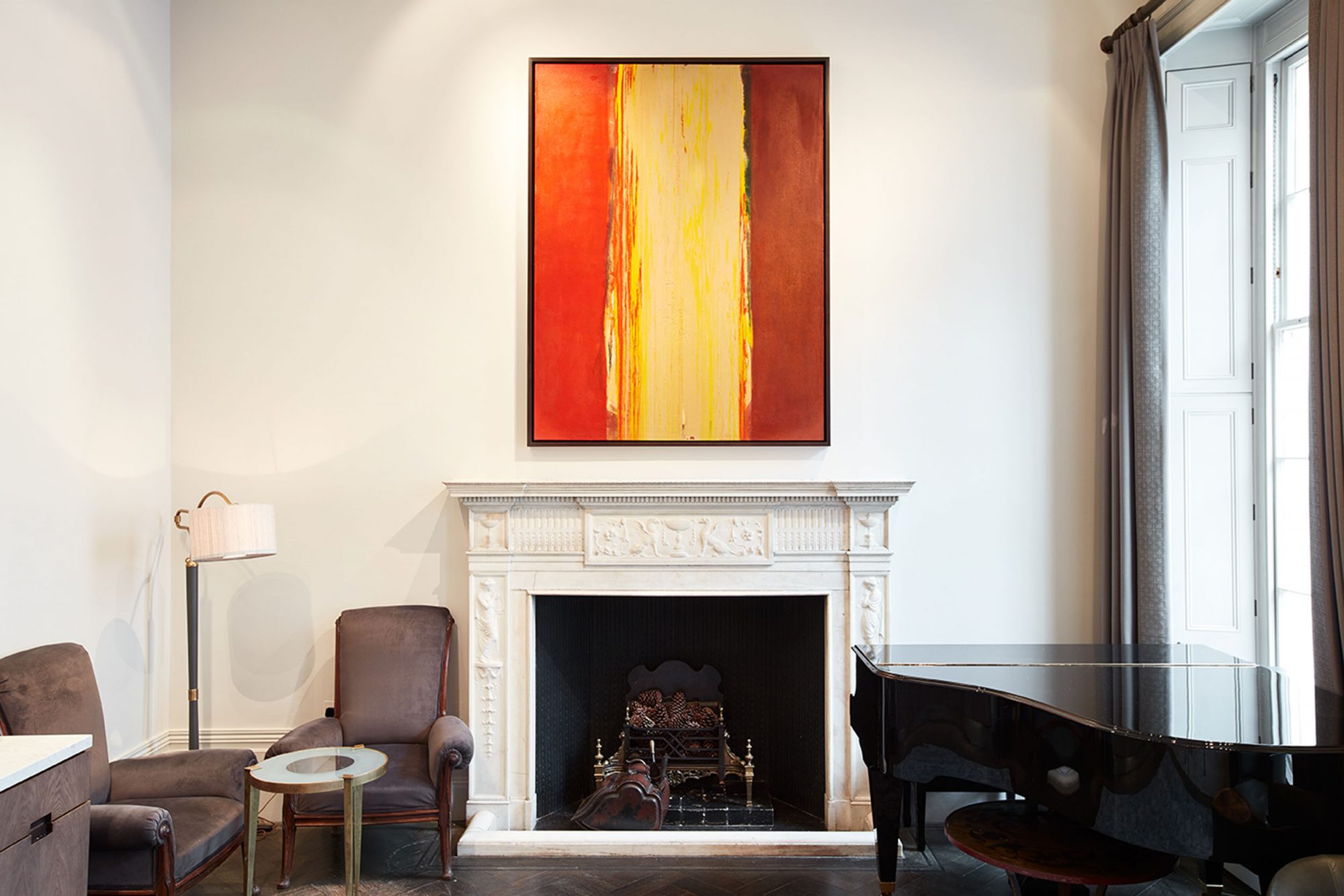
Tap to view slideshow
This solo exhibition is dedicated to the work of prominent artist Frank Bowling OBE RA. Now in his early 80s and continuing to create new work, Bowling had an important and celebrated solo show at Tate Britain in 2019 as well as at Haus der Kunst, Munich in 2017. His work was featured in Soul of a Nation: Art in the Age of Black Power at Tate Modern the same year. The Arts Club presents a dynamic survey of works spanning over 50 years of Bowling’s career.
Bowling left his native country of British Guiana at 19 years old to move to London where he later studied at the Royal College of Art, graduating with a silver medal. Bowling started his artistic career as a figurative painter, and, following his move to New York in 1966, he was influenced by the artists of the moment including Mark Rothko and Barnett Newman. This triggered a powerful transitional phase in Bowling’s artistic development, towards abstraction.
During his period in New York from the late 1960s until the early 1970s, Bowling started experimenting with material, structure, process and colour. He began by creating the ‘Map Paintings’, which were partly influenced by his encounter with the work of Pop artists Larry Rivers and Jasper Johns whom he met while living at the Chelsea Hotel. Within the series, the canvas is layered with stencilled outlines of maps of Australia, Africa and South America, occupying a space between abstract and colour field painting. Later Bowling would form friendships with Mel Edwards, Larry Poons and also Sam Gilliam, whose work was recently the subject of a solo exhibition at The Arts Club.
In 1971 Bowling had a landmark solo show at the Whitney Museum and encountered the American art critic Clement Greenberg, who became deeply influential and a catalyst for Bowling’s focus on abstraction and process. In 1973 Bowling developed a technique of pouring the paint directly onto a slanted canvas, allowing the wet paint to gradually cascade down the surface. A series of these iconic Poured Paintings were the subject of his solo exhibition at Tate Britain in 2013, and examples of these paintings will be on show at The Arts Club.
In the early 1980s, Bowling continued to experiment with geometry and form, building layers on the canvas by adding foam and other found objects, exploring further possibilities of abstract painting. His use of acrylic gel is particularly indicative of his ground-breaking approach at this time. In recent years, the octogenarian artist has adapted his techniques; he now paints with the canvas placed on a table and continues to create new work every day in his London studio.
Bowling was born in 1934 in Bartica, British Guiana and lives and works between New York and London. Bowling’s work is in the collections of many major institutions worldwide, including Tate Gallery, London; Victoria and Albert Museum, London; Museum of Modern Art, New York; Metropolitan Museum of Art, New York; Whitney Museum of American Art, New York. Solo exhibitions include Tate Britain, London; Dallas Museum of Art, USA; Royal Academy of Arts, UK; Whitney Museum of American Art, New York.
The exhibition is curated by Pernilla Holmes and Amelie von Wedel from Wedel Art. Frank Bowling is represented by Hales Gallery, London and New York.
